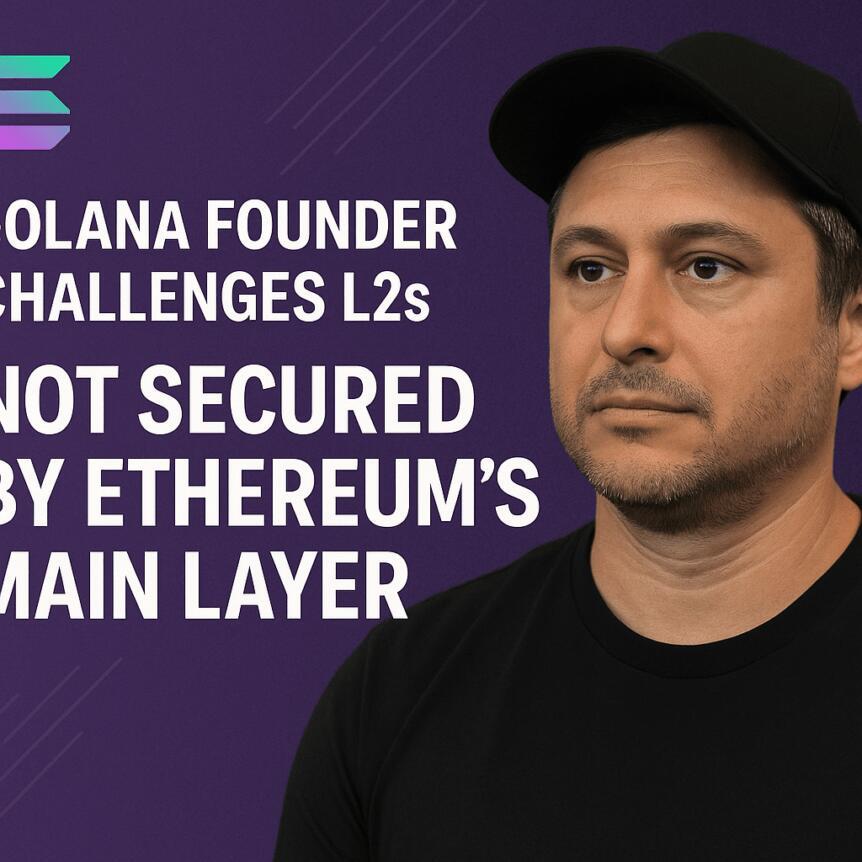
Solana Founder Challenges L2s: Not Secured By Ethereum's Main Layer
- Yakovenko questions the security assurances of Ethereum's layer-2 networks, citing vulnerabilities and lack of proper audits. The number of Ethereum layer-2 solutions has surged to over 130, raising concerns about network fragmentation. Industry experts see the proliferation of L2s as both a sign of growth and a source of revenue cannibalization for Ethereum's main chain. The debate continues over whether Ethereum's L2 solutions strengthen or undermine the security and decentralization of the Ethereum blockchain.
Solana co-founder Anatoly Yakovenko challenged the narrative that Ethereum's layer-2 (L2) scaling networks inherently inherit the security guarantees of the main blockchain during a contentious debate on Sunday. His criticisms focused on the substantial attack surface and complex code bases that compromise the security integrity of these secondary networks, which often lack comprehensive audits. Yakovenko also pointed out the risk of user funds being transferred or drained without explicit consent, given the reliance on multi-signature custody models.
'The claim that layer-2s inherit ETH security is erroneous,' Yakovenko stated, emphasizing that concerns about risks and revenue sharing on the Ethereum network remain significant. During the debate, he argued:
Source: Anatoly Yakovenko
The conversation surrounding Ethereum's expanding ecosystem of layer-2 networks continues to intensify, as industry insiders debate their overall impact on the primary blockchain. Some argue that L2s provide crucial scalability solutions, enabling faster and cheaper transactions, especially for decentralized finance (DeFi) applications, NFTs, and other crypto endeavors.
Related: Ethereum layer 2s outperform relief rallies after $19B crash
Are there too many Ethereum layer-2 networks?Right now, there are 129 verified Ethereum L2 solutions listed on L2Beat, with an additional 29 awaiting review, reflecting a significant expansion. Industry analysts, however, argue that the ecosystem has grown excessively, with some claiming there are more L2s than necessary, potentially leading to fragmentation and inefficiencies.
Adrian Brink, co-founder of Anoma, a layer-1 blockchain protocol, remarked that the industry currently develops about ten times more L2s than needed for optimal growth. Meanwhile, Igor Mandrigin, co-founder of Gateway, views the rapid expansion as a positive sign of Ethereum's vitality, underscoring that the list of high-throughput options benefits the network by providing diverse solutions.
On the downside, this proliferation may be undermining Ethereum's core revenue model. Binance Research has noted that the growing number of L2s arguably siphons liquidity and transaction fees away from the main Ethereum chain, effectively cannibalizing its revenue streams due to the lower costs associated with transacting on these secondary networks.
Despite the concerns, many industry figures maintain that the growth of layer-2 solutions is a healthy sign of Ethereum's ecosystem evolution. The debate revolves around whether this trend ultimately enhances or dilutes the security and decentralization principles that underpin blockchain technology.
Crypto Investing Risk WarningCrypto assets are highly volatile. Your capital is at risk. Don't invest unless you're prepared to lose all the money you invest.
Legal Disclaimer:
MENAFN provides the
information “as is” without warranty of any kind. We do not accept
any responsibility or liability for the accuracy, content, images,
videos, licenses, completeness, legality, or reliability of the information
contained in this article. If you have any complaints or copyright
issues related to this article, kindly contact the provider above.

















Comments
No comment